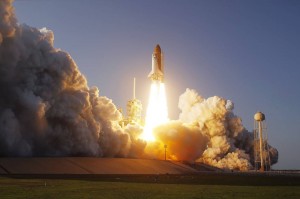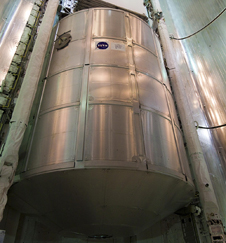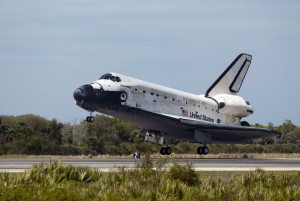Discovery’s final mission brought important upgrades to the International Space Station
After 38 missions into space, NASA’s space shuttle Discovery launched for the last time six years ago today.
Six astronauts flew onboard this mission known as STS-133: Commander Steve Lindsey, Pilot Eric Boe and Mission Specialists Alvin Drew, Steve Bowen, Michael Barratt and Nicole Stott. They brought a new module and an external stowage platform to the ISS. They also brought critical equipment and supplies.
Image credit: NASA
Two spacewalks were performed by Bowen and Drew; they performed maintenance and installed new components. A module that was previously used to ferry cargo back and forth to the station seven times was attached permanently to the station. Previously known as the Leonardo Multipurpose Module, it became the Permanent Multipurpose Module. It underwent modifications to become a permanent module, some of which included providing easy interfaces and a certified life extension for all equipment and subsystems. The module provided extra storage for the ISS, desperately needed at the time.
Image credit: NASA/Jack Pfaller
During its operational lifetime, Discovery flew more flights to space than any other shuttle. It traveled more than 5,600 times around the Earth. It was the vehicle that carried Hubble Space Telescope into orbit, and over its lifetime, Discovery carried a total of 180 people into space.
Image Credit: NASA
Discovery is now on display at the Udvar-Hazy Center in Chantilly, VA, but don’t worry—we haven’t stopped going to space. Far from it. With a human presence maintained continuously for 16 years on the International Space Station that orbits Earth and a crew vehicle called Orion being developed to take humans on deep space missions, human spaceflight will absolutely be a part of our future.
Learn more about the space shuttle program at NASA.gov.




